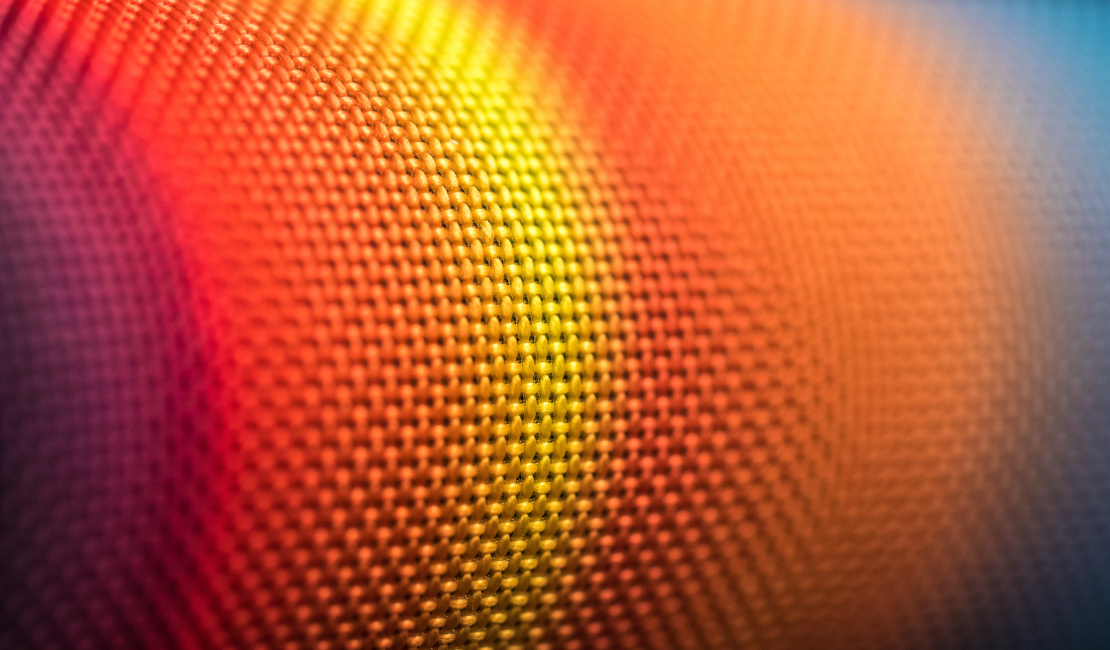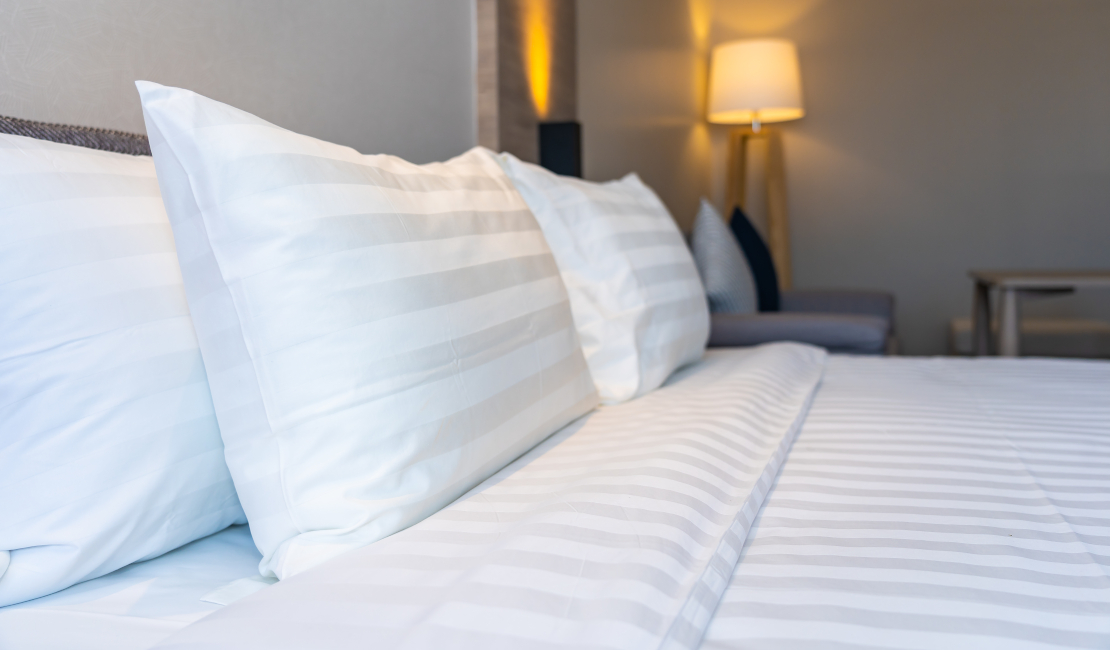Not sure where to start?
Answer a few simple questions and we’ll direct you to your perfect bed.
Enable notifications to get the best news on sales and special offers
You’re walking down the aisle… (or scrolling through an online catalogue). You can feel a flutter in your stomach. Wait, what? Why, when you’ve been tasked to buy some new bedding, do you feel a flutter in your stomach?
It should be a simple process! But everywhere you look you see numbers jumping out at you. Thread Count this, thread count that…
What does it all mean? Why can’t you just get a simple set of sheets without being confused by all the numbers?
Buying new bedding should really not be daunting. We understand that when it comes to buying essential bedroom stuff like duvet covers, bed sheets or full bedding sets, you don’t want to be bogged down by technical terms. And that is why we at The Mattress Warehouse decided to put together an easy-to-follow tutorial on thread count.
It is the number of threads in one square inch of fabric. For those of us who use the metric system, that comes down to the number of criss-crossing threads in a 2.54 x 2.54 cm square.

Let’s break it down some more. If you take a square inch of fabric and count out all of the threads coming down and all of the threads going across, you get the thread count, or TC, for that fabric. Does that make sense?
Okay great! Now that you know what TC stands for, you might be wondering what it has to do with the quality of the bedding you want to buy. It is only natural to wonder about that, so let’s dive right into it.
You might have heard that the higher the TC, the better. However, that is not always the case. You see, there are some sneaky companies out there that inflate TC artificially. And more often than not, doing that leads to a poor quality fabric.
How do they do it? Either by using extremely thin threads to weave the fabric from, or by using cheap, multi-ply yarn instead of proper single-ply threads. Then, instead of counting the multi-ply threads as one thread, they multiply the TC with the number of yarns inside a single thread to get that inflated number.
For instance, if you get a TC of 200 for a multi-ply yarn that is made up of two threads woven together, these dishonest companies will say that the TC is 400 instead of 200. And that is how people inflate thread count.
Therefore, when you are looking to buy new bedding sets, don’t only look at the TC number. Look at what the threads are made of (more on that later).
In theory, the higher the TC, the better the sheets. But because of what we explained about artificial TC just now, that is not always the case. For most of your bedding needs, 200 TC is good enough. However, if you prefer to sleep in luxury, you might opt for something with a slightly higher TC.
According to textile experts, having a TC of 500 can make for heavy sheets that restricts airflow – perfect for those cold winter months. Many experts agree that, if the fabric is made from thin, high-quality yarns, a TC of 400 to 500 makes for soft, smooth bedding.
Probably not. If you see bedding with a TC of 800, it is quite likely that those numbers have been doctored.

Whether you’re looking for a fitted sheet or a new duvet cover, you should know that TC alone doesn’t define the quality of the bedding. The material from which the sheets are made and the type of weave also contributes to the quality.
Cotton is the most used material for bed sheets and duvets. It is a natural fabric that feels soft to the touch and is quite durable to boot. There are different types of cotton threads and as a rule, long-staple cotton products are at the top end of the cotton range.
Now hold on a minute! What about Egyptian cotton – Is Egyptian cotton better?
Egyptian cotton sheets are made from long-staple cotton threads, so yes, it is a great product. Another long-staple cotton weave you can also look out for is the Pima style sheets.
Another popular material for bed sets is synthetic microfiber. It is generally a bit cheaper than cotton sheets and does not breathe as well as cotton. However, it also doesn’t show wrinkles as easily as cotton, so it has its positives.
Lastly, there are jersey sheets. These are knit, instead of woven and they are definitely a tad warmer than normal cotton sheets. We recommend you get those for the winter.
You may or you may not see the type of weave on the product description of the bedding you’re looking at buying. If you see the word percale or sateen on there, you are looking at weave type.
So, what is the difference between the two?
So…
It depends on what/where you want to use the bedding for.
If it is for your child that is still growing up, get sheets with a relatively low thread count, made from durable fabric. We recommend the Poly Cotton 250 Thread Count series.
On the other hand, if you want to spoil yourself, get bedding that is made from long-staple threads with a TC of 500. Check out our Basel 500 Thread Count series.
We hope you are more at ease with the term thread count by now and that you know what sheets you want to buy as we go into summer. Don’t hesitate to contact us, should you have any further questions about bedding and thread count.
Why Single Beds Are Making a Comeback: Secrets to a Functional Home
From Dorm Room to First Apartment: Why a Double Mattress Is Ideal
Double Beds: Memory Foam vs. Spring Mattresses Pros and Cons
Compact Solutions: 5 Best Couch Beds for Urban Living
Caring for Your Headboard Set: Essential Maintenance Tips
How to Match Your Bed Headboard to Your Bedroom Decor
The King Size Bed: Key to a 5-Star Sleep Experience
Size Guide: Finding the perfect mattress for your Queen bed
Affordable Bed Sets: What Makes it Worth the Splurge?
Local Treasures: Unveiling the Best Bed Mattresses for Sale Nearby
Why Single Beds Are Making a Comeback: Secrets to a Functional Home
From Dorm Room to First Apartment: Why a Double Mattress Is Ideal
Double Beds: Memory Foam vs. Spring Mattresses Pros and Cons
Compact Solutions: 5 Best Couch Beds for Urban Living
Caring for Your Headboard Set: Essential Maintenance Tips
How to Match Your Bed Headboard to Your Bedroom Decor
The King Size Bed: Key to a 5-Star Sleep Experience
Size Guide: Finding the perfect mattress for your Queen bed
Affordable Bed Sets: What Makes it Worth the Splurge?
Local Treasures: Unveiling the Best Bed Mattresses for Sale Nearby